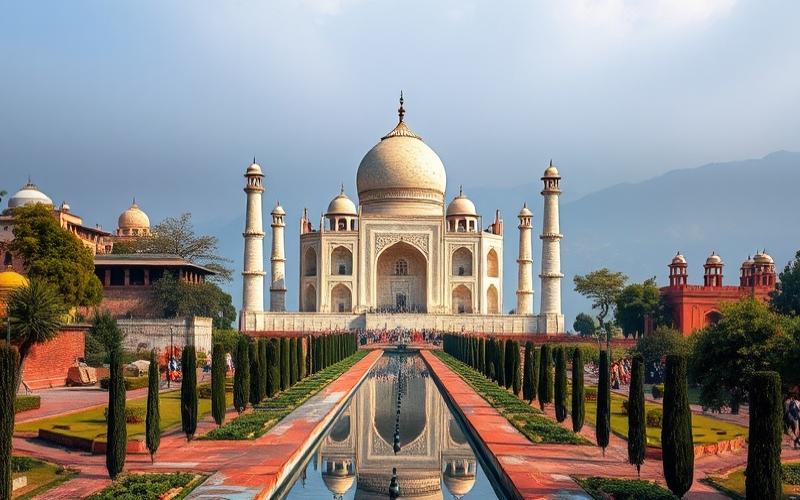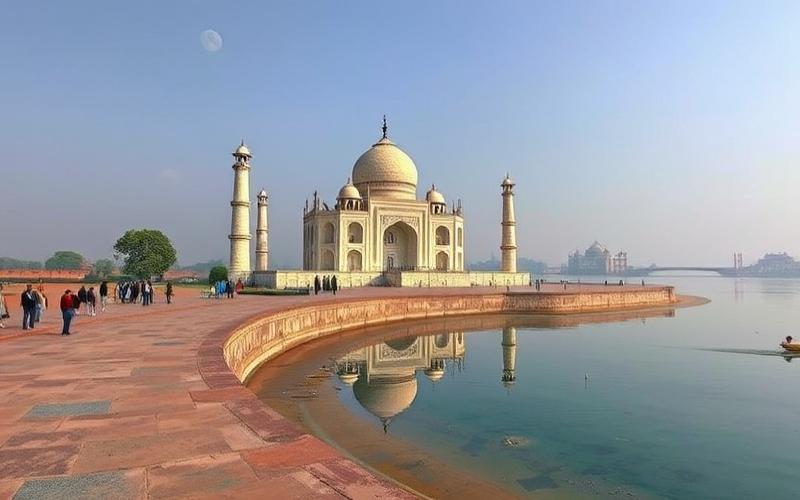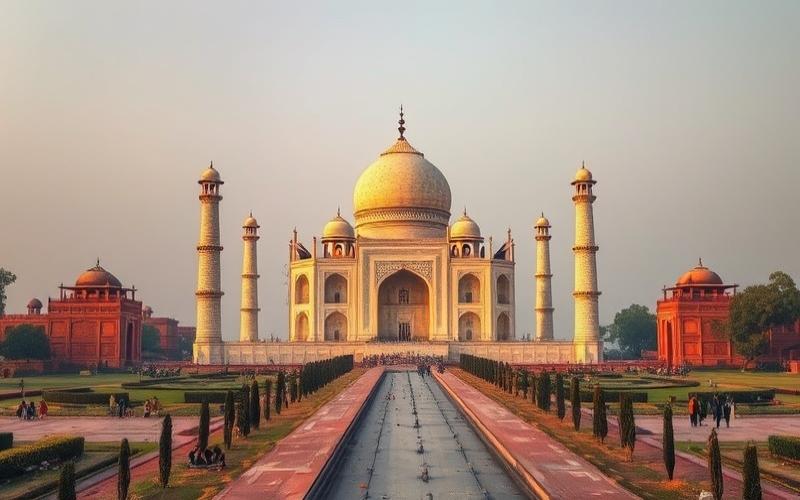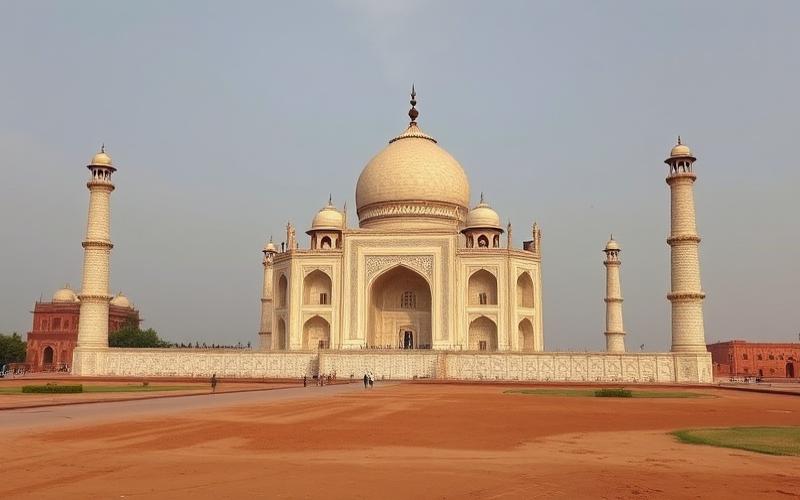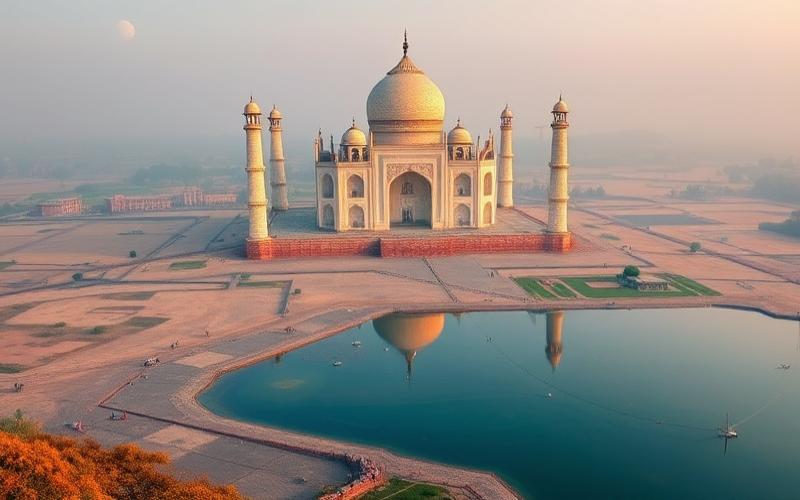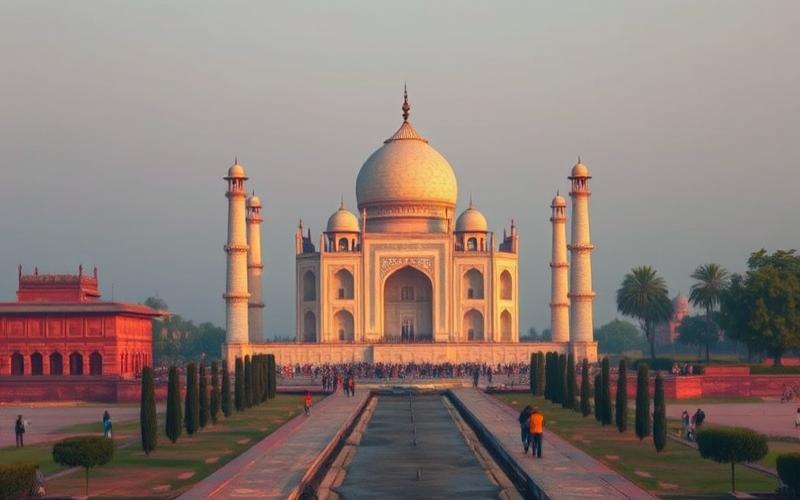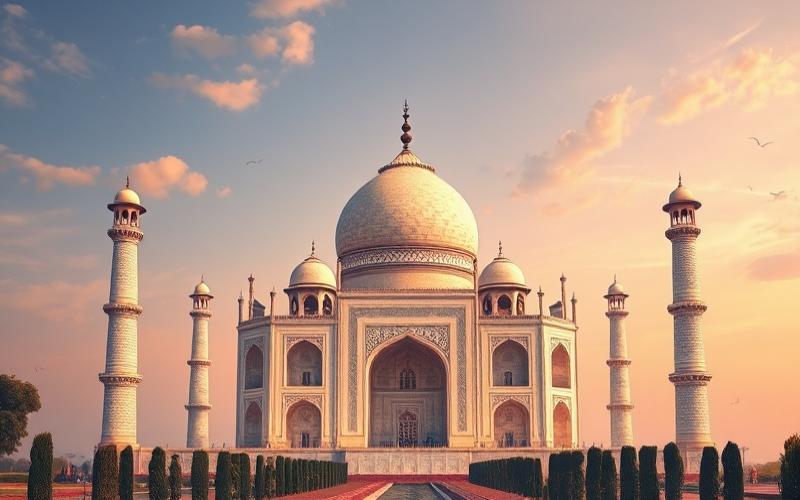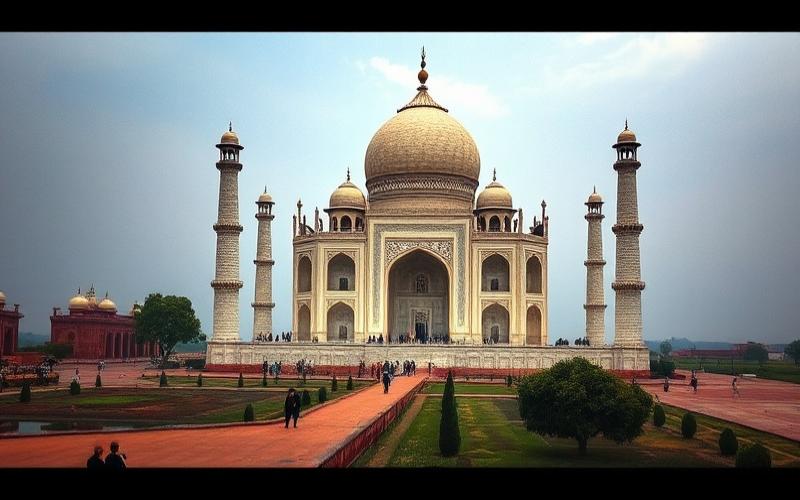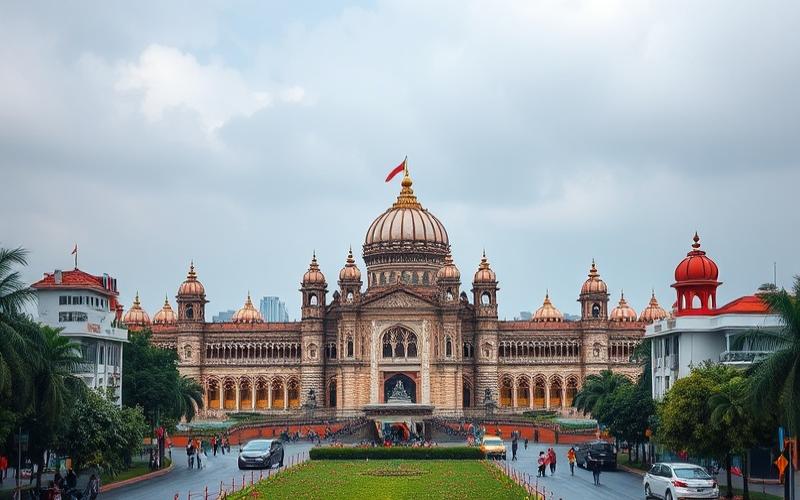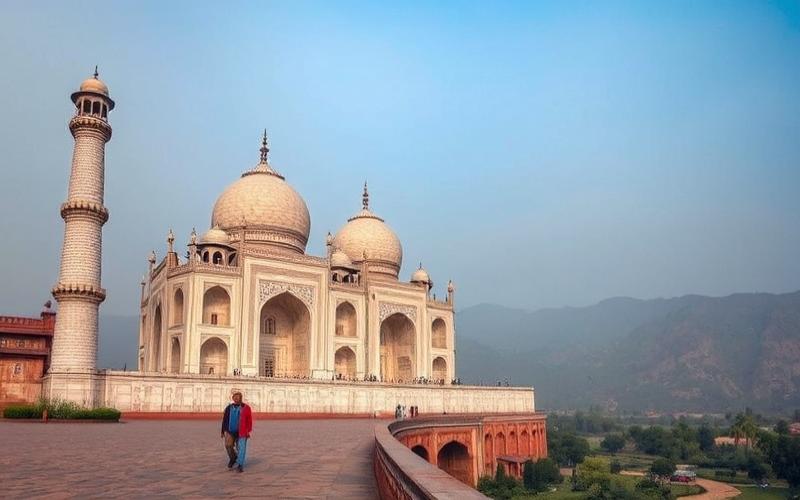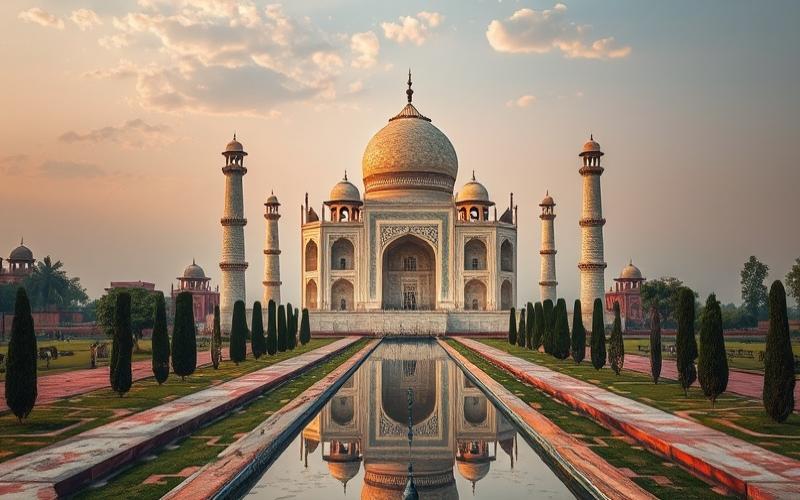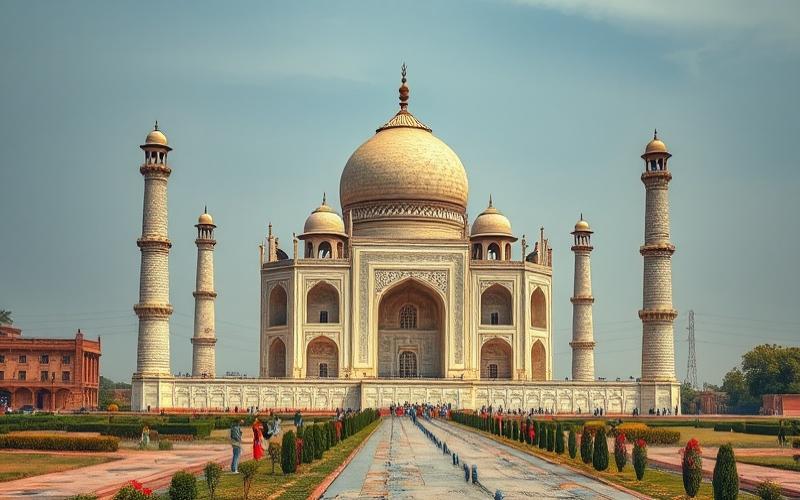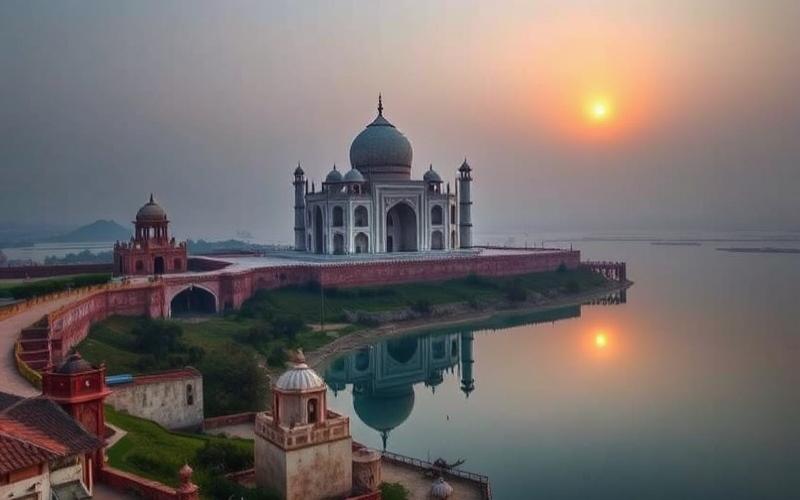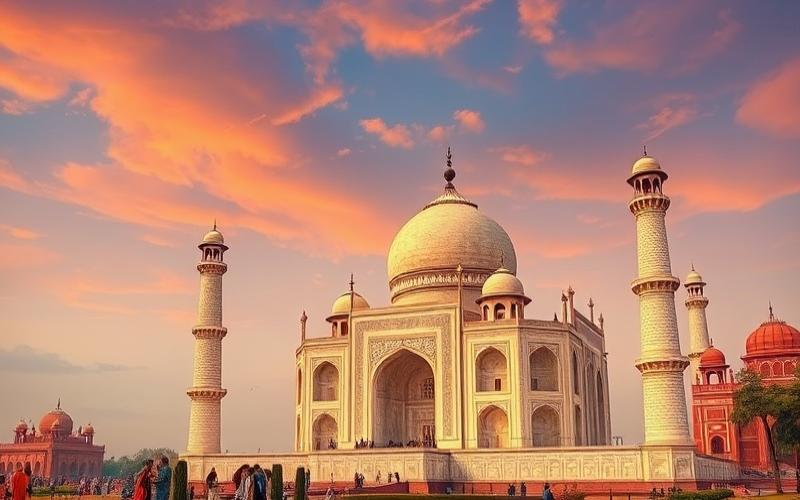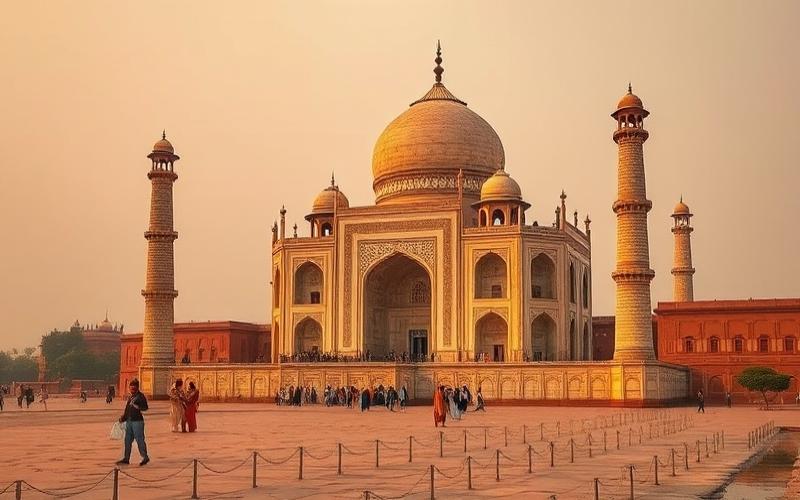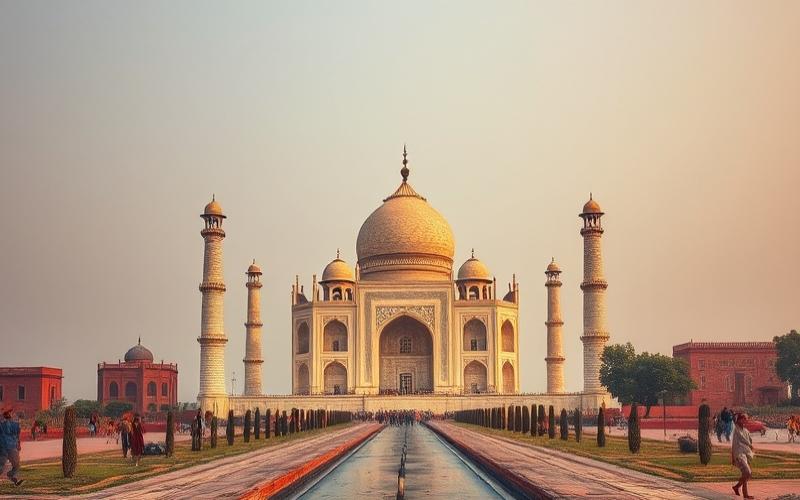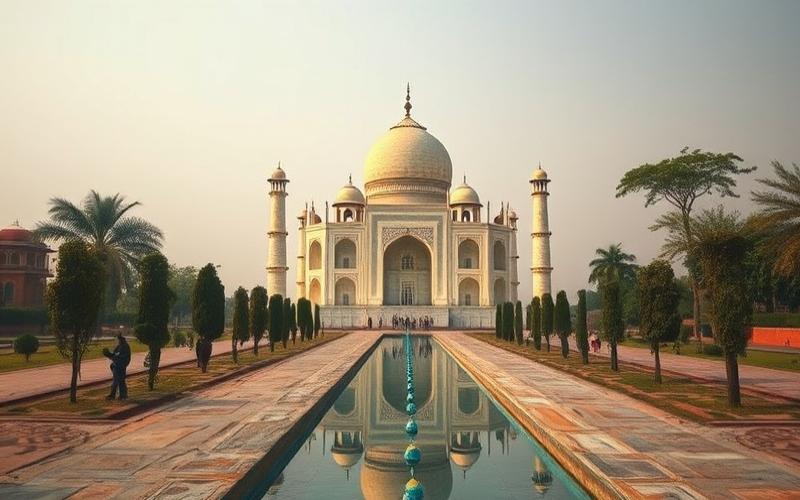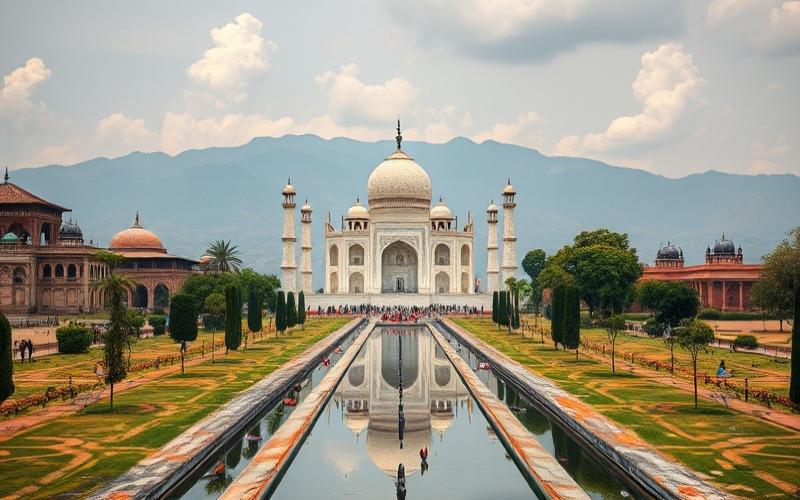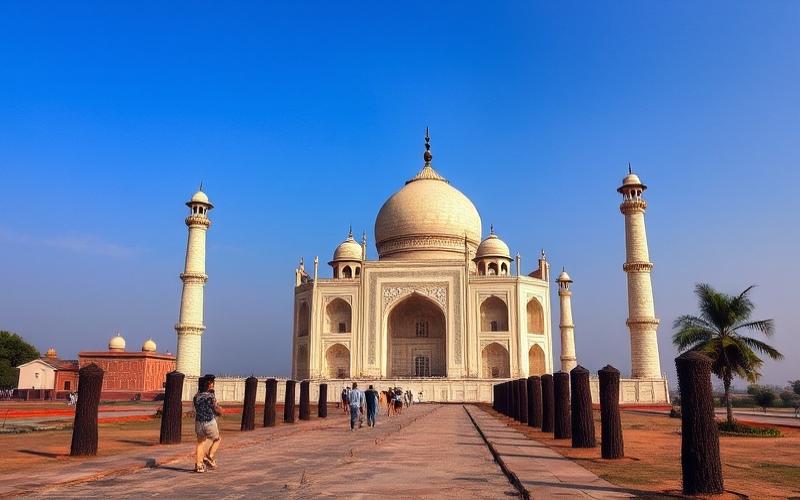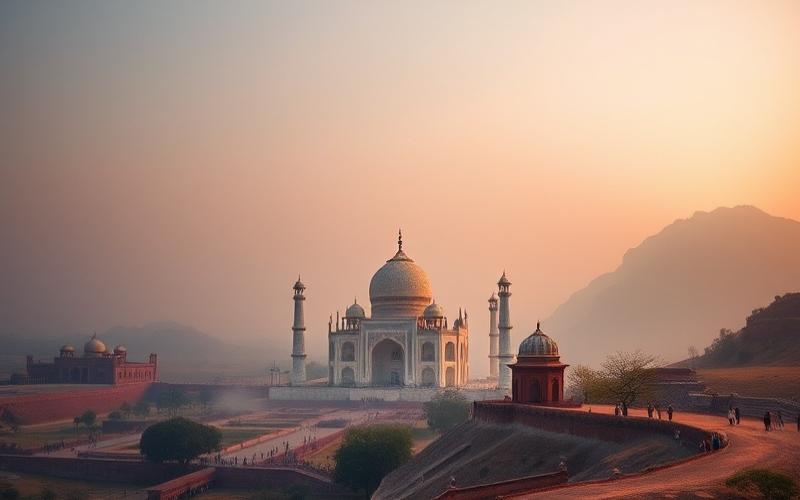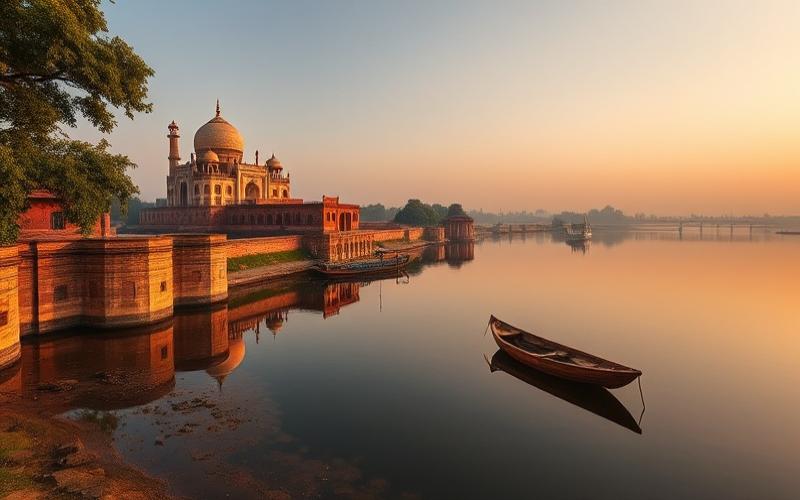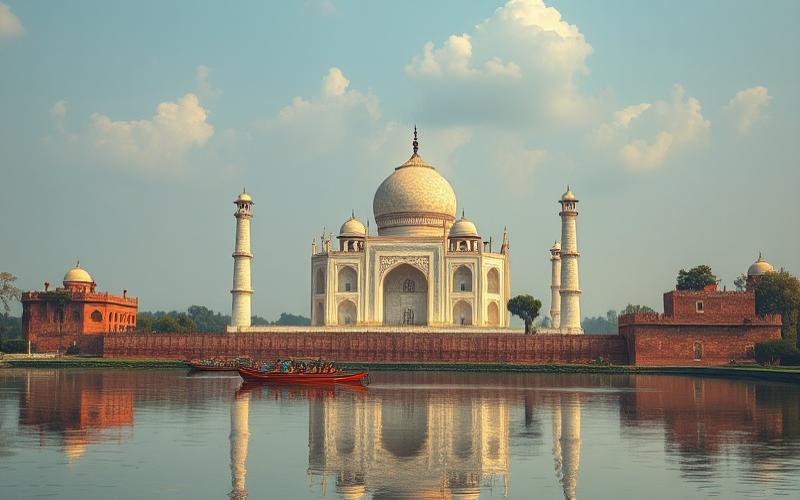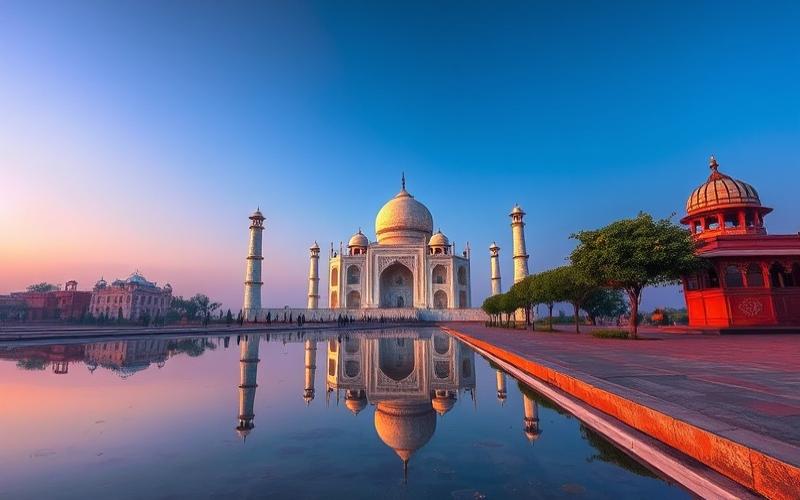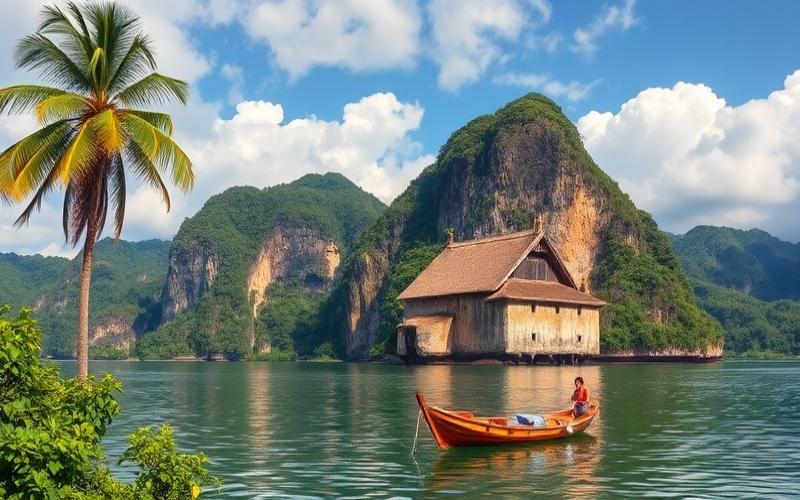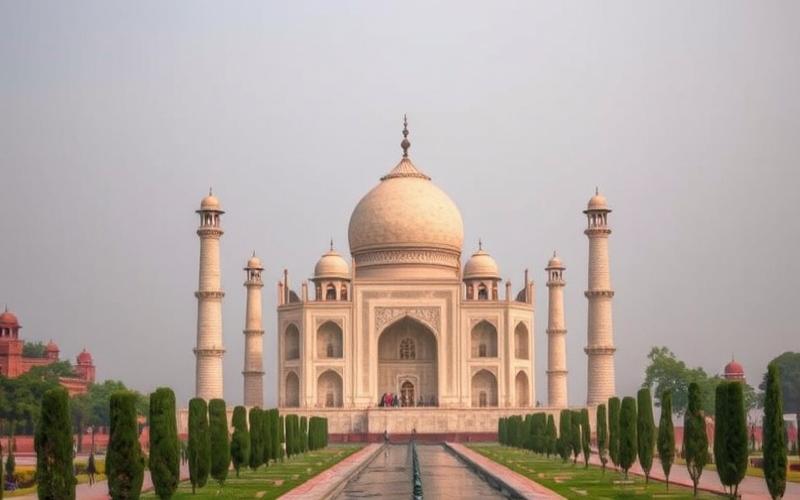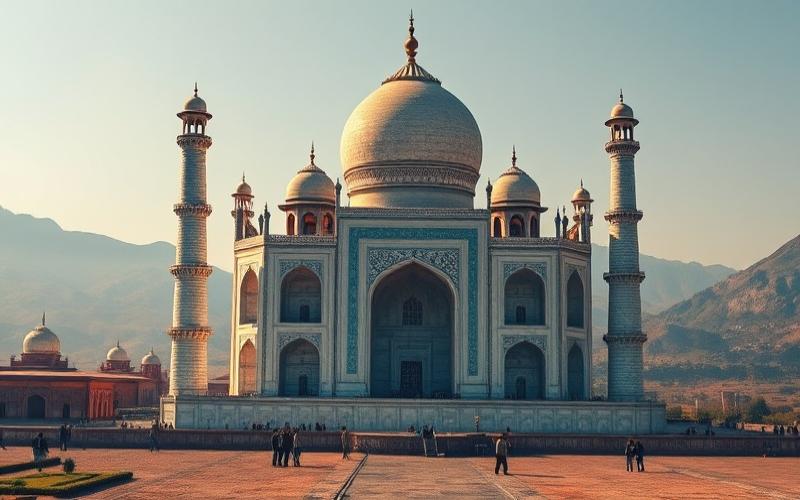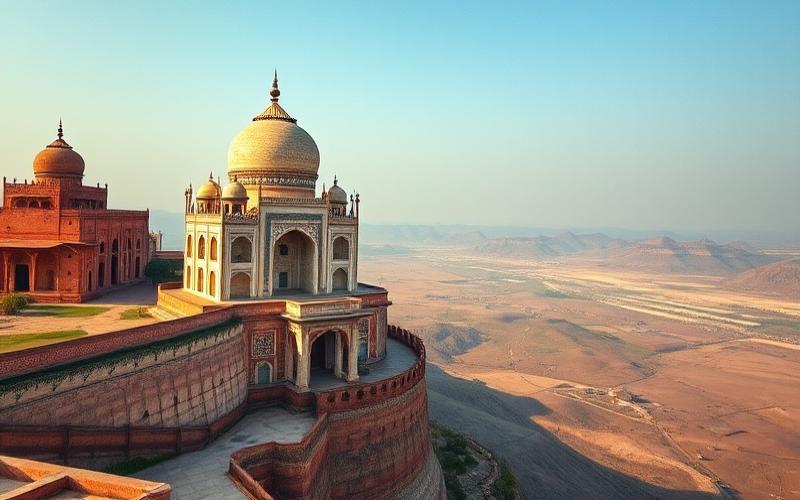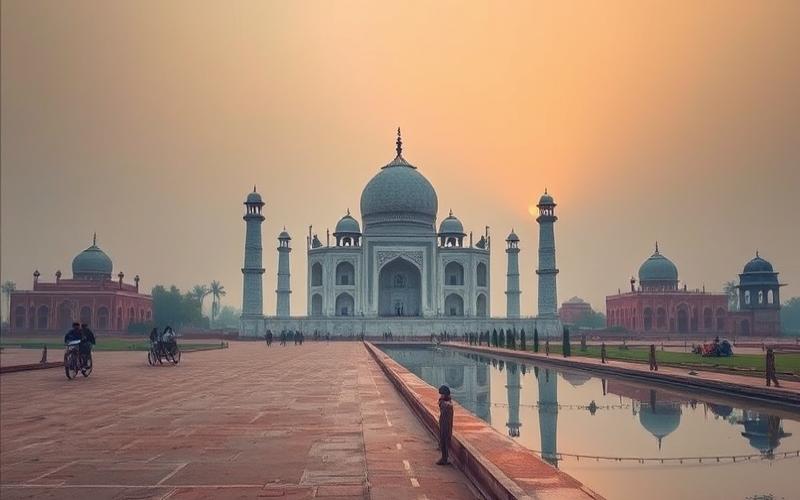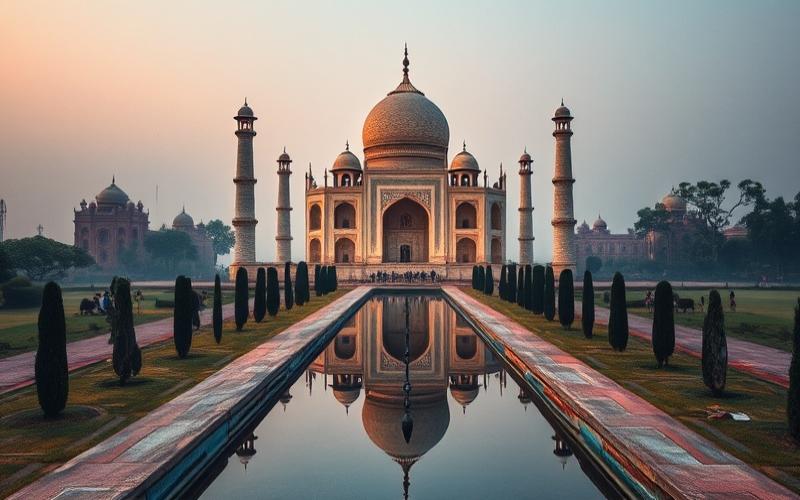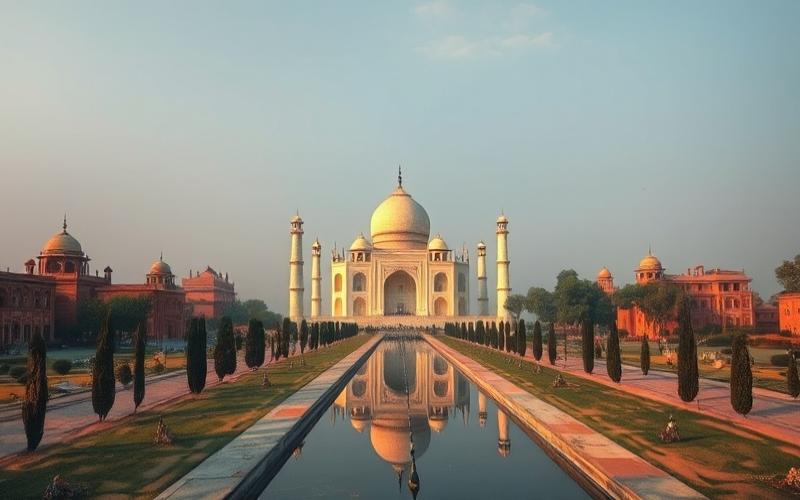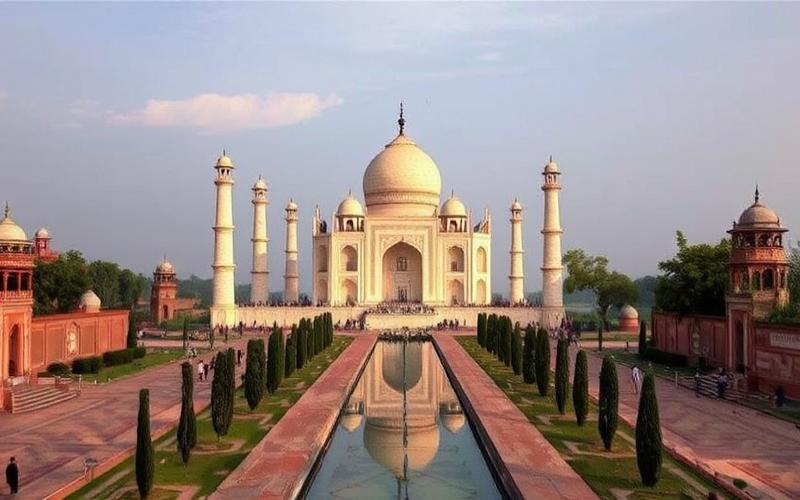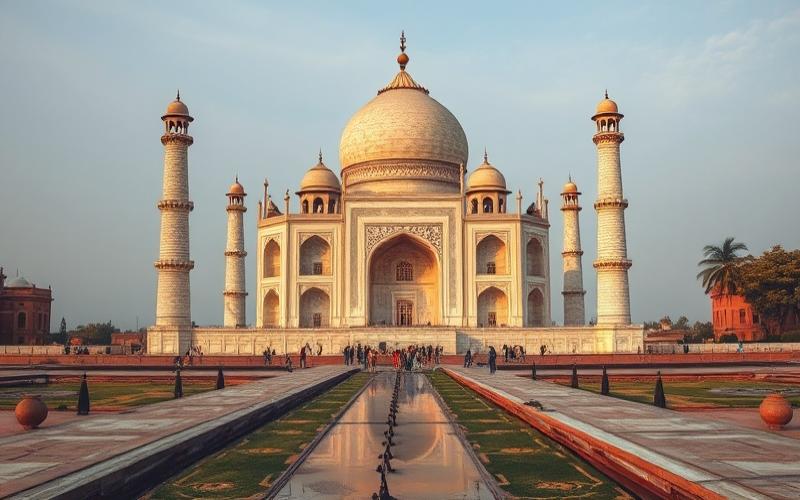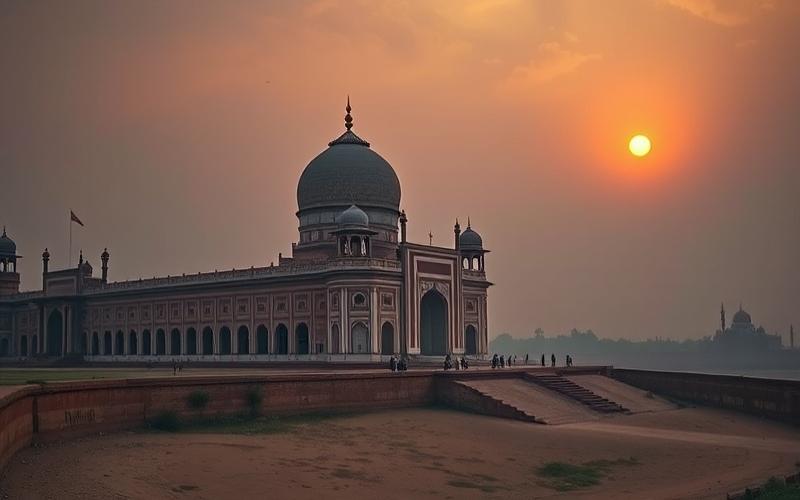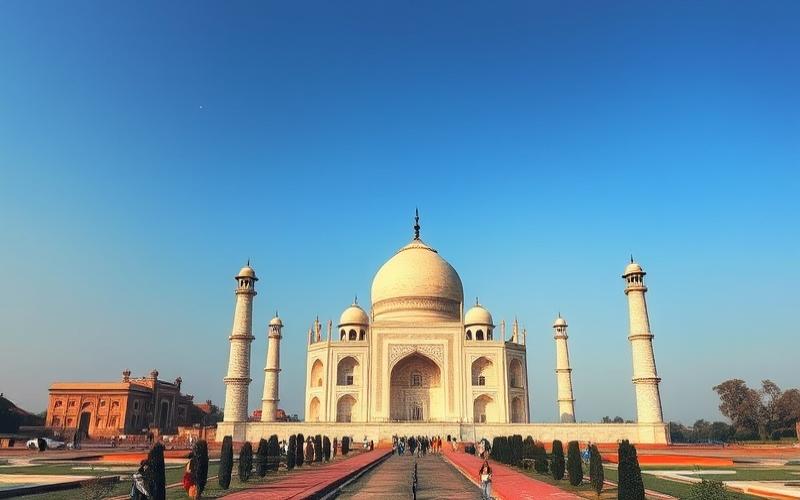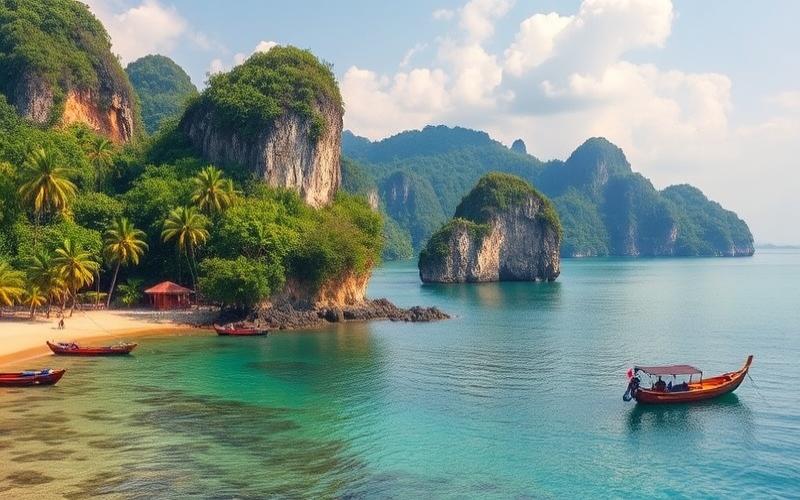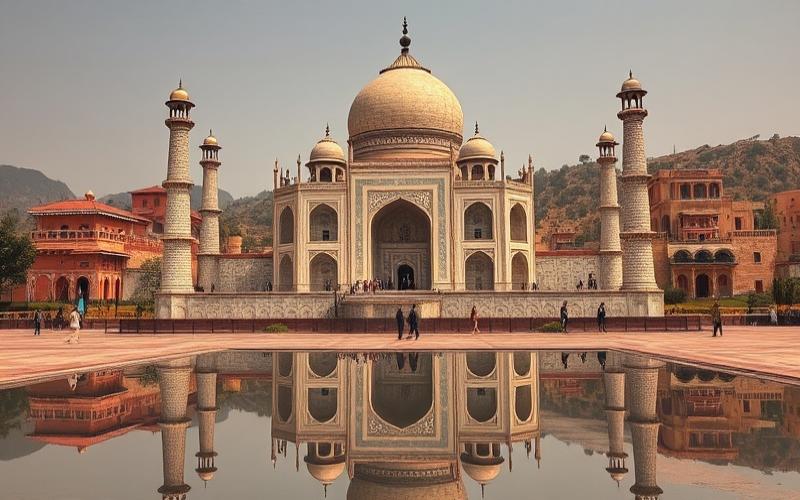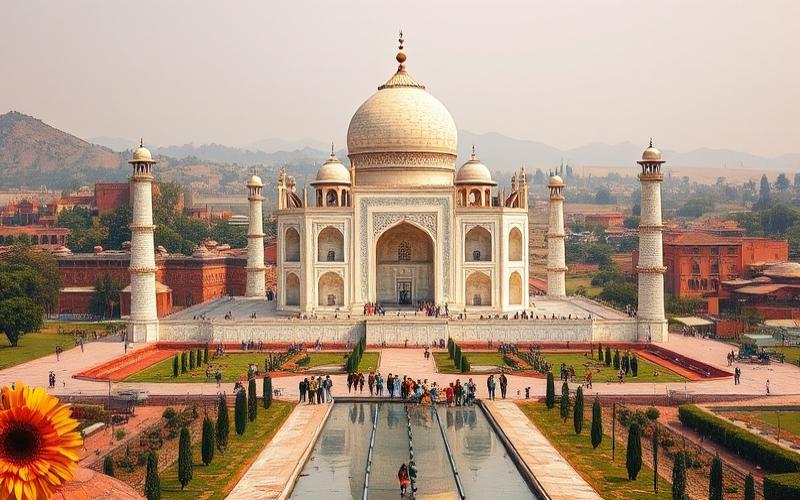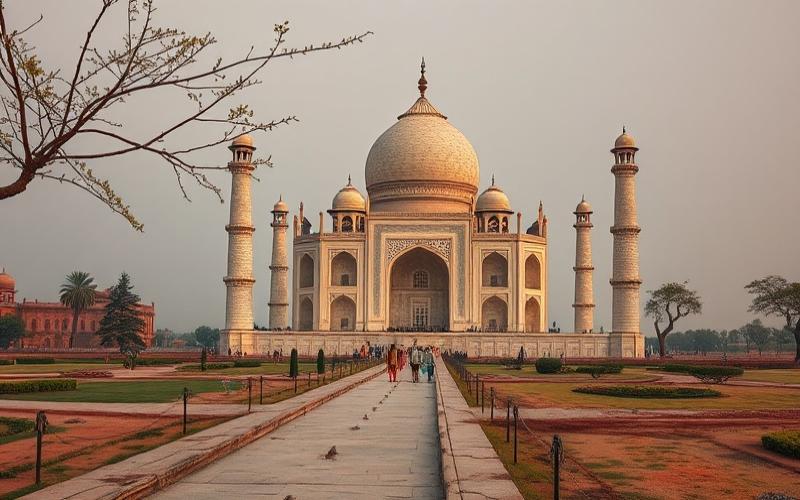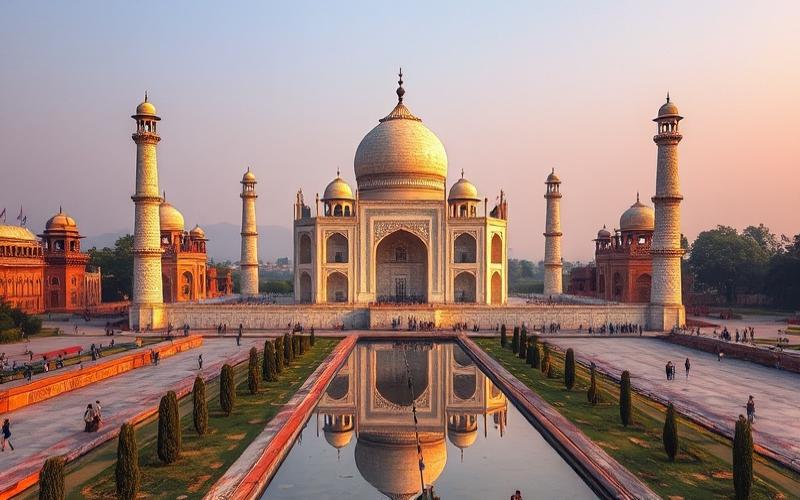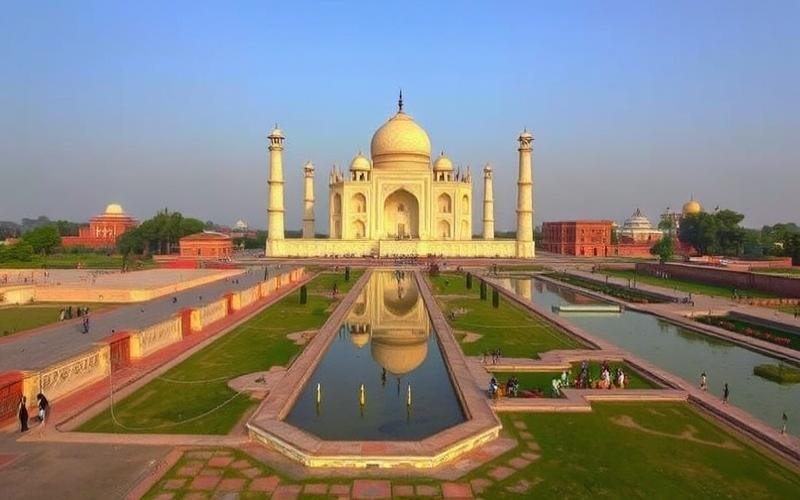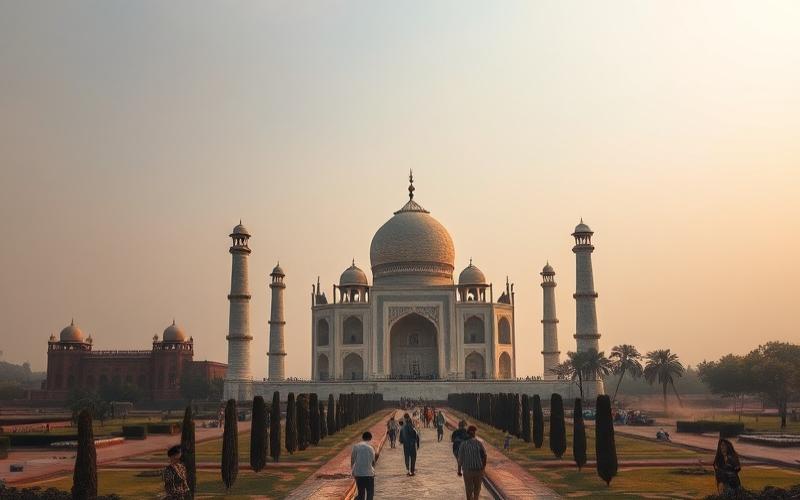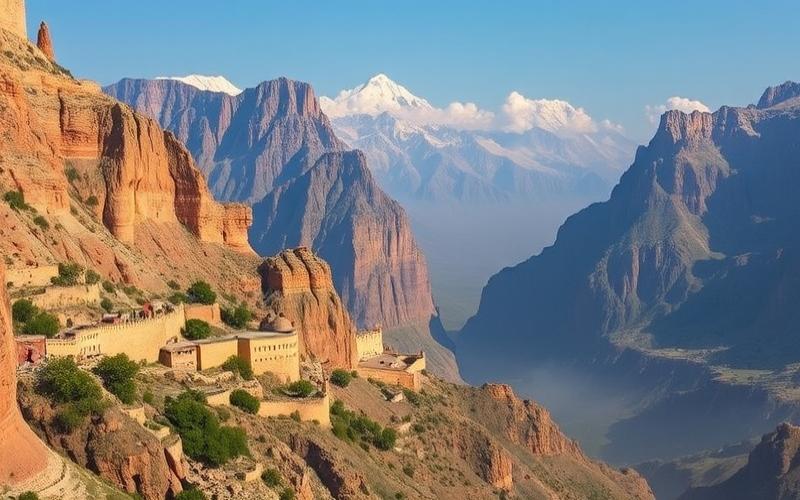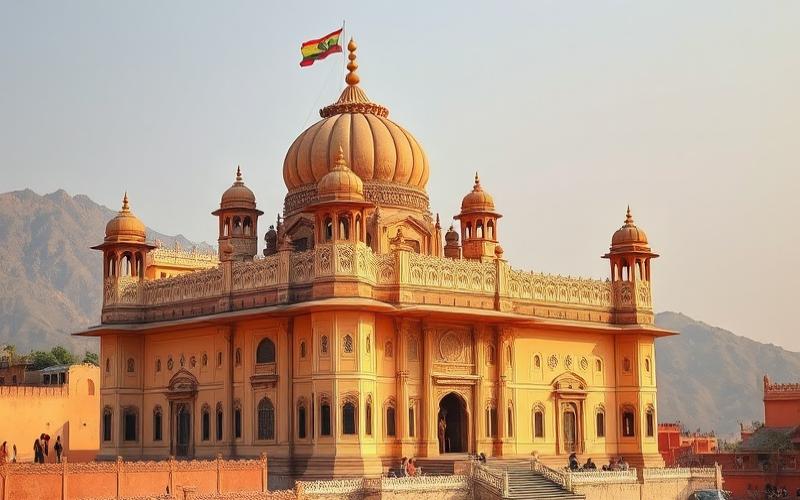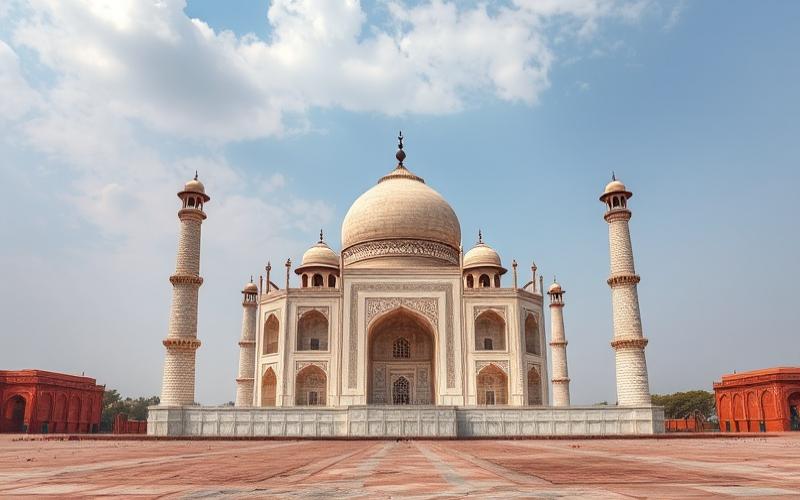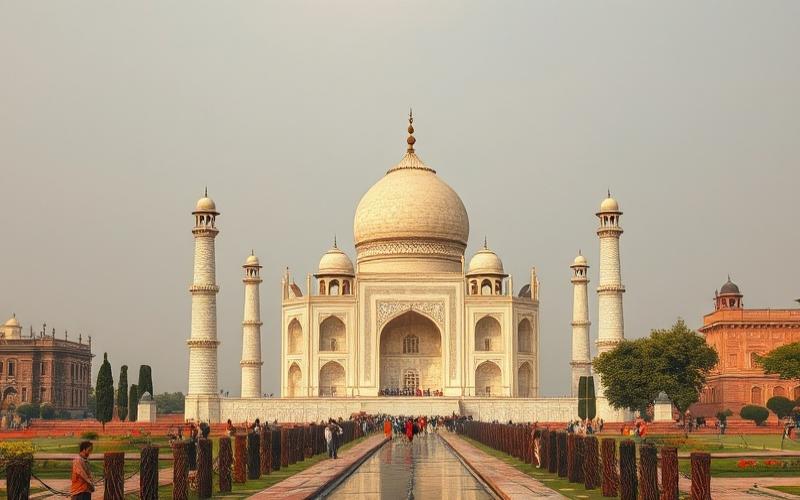
 Published on and written by Cyril Jarnias
Published on and written by Cyril Jarnias
India: A Fascinating Millennial History
India, a vibrant and complex country, boasts one of the world’s most fascinating and rich histories, spanning millennia. From the ancient civilizations of the Indus Valley to the upheavals of the modern era, Indian territory has been the stage for powerful dynasties, diverse cultural influences, and significant socio-political changes.
The birthplace of major religions such as Hinduism, Buddhism, and Sikhism, India has seen its cultural heritage influenced by numerous conquerors, merchants, and thinkers who have walked its lands.
This historical mosaic continues to exert significant influence not only on its internal development but also on that of the entire world.
India’s Origins: Mysteries and Legends
The earliest settlements in the Indian subcontinent date back nearly 2.8 million years, but the most significant human traces for historical reconstruction come from the Upper Paleolithic period, notably with the discovery of lithic tools in the Soan Valley and the Narmada skullcap fragment (approximately 30,000–20,000 BCE), evidencing ancient and diverse human occupation.
Major Archaeological Discoveries:
- Soanian lithic tools in the northwestern subcontinent.
- Narmada skullcap, the first significant human remains.
- Excavations at Mohenjo-Daro and Harappa, revealing the Indus Civilization (circa 2500–1900 BCE).
| Archaeological Site | Key Discovery | Approximate Dating |
|---|---|---|
| Soan Valley | Lithic tools (Soanian) | Middle/Upper Pleistocene |
| Narmada (Deccan) | Human skullcap | 30,000 – 20,000 BCE |
| Harappa, Mohenjo-Daro | Planned cities, sewers, artifacts | 2500 – 1900 BCE |
The Dravidians are considered the first historical inhabitants of southern India, while the Indus Valley Civilization developed in the northwest, showcasing advanced urban organization with city planning, drainage systems, and public infrastructure.
The gradual disappearance of the Indus Civilization around 1900 BCE remains partially unexplained (climate change, river modifications, soil exhaustion). It gave way to the arrival of Indo-Aryan peoples who, between 1500 and 1200 BCE, founded the first Vedic kingdoms and brought major linguistic, religious, and social innovations.
Influence of Myths and Legends:
- The Mahabharata and Ramayana are not strictly historical texts, but they constitute major references for Indian cultural identity.
- These epics transmit moral, social, and religious values while providing a foundational narrative on the genesis of peoples and dynasties.
- They serve as models for literature, art, and social practices and are constantly reinterpreted in contemporary culture.
Foreign Influences and Cultural Enrichment:
- Persian Invasions (6th–4th centuries BCE): Introduction of administrative, monetary, and artistic techniques; influence on writing (adaptation of Aramaic for Gandhari).
- Alexander the Great’s Conquest (327–325 BCE): Opening to Greco-Bactrian exchanges; influence on Buddhist art (Greco-Buddhist art of Gandhara); contact with the Mediterranean world.
List of Major Foreign Contributions:
- New techniques of administration and territorial management.
- Development of syncretic artistic currents (Indo-Greek art).
- Increased commercial exchanges with Central Asia and the Mediterranean basin.
The memory of early settlements, great civilizations, epic tales, and external contacts forms a fundamental basis for the contemporary understanding of Indian history. These narratives, at the crossroads of archaeology, myth, and history, nourish a collective identity where diversity and continuity are constantly questioned and celebrated.
The study of Indian origins, major archaeological discoveries, and epic traditions remains essential to grasp the richness, complexity, and resilience of Indian civilization, whose history remains a living object of reflection and reinvention.
Good to Know:
India’s origins delve into the mysteries of early settlements, with archaeological discoveries like the sites of Mohenjo-daro and Harappa revealing a sophisticated Indus Civilization existing as early as 2500 BCE. Their mysterious decline gave way to the advent of the Aryans, whose kingdoms inaugurated the Vedic Age. The epics of the Mahabharata and Ramayana, through their mythical tales, have profoundly influenced Indian cultural identity, creating a rich heritage of values and legends. Persian incursions and Alexander the Great’s conquests also marked the region’s history through cultural and technological exchanges. Understanding these narratives and influences allows for a better grasp of the complexity and richness of contemporary India’s historical roots.
From Antiquity to Today: A Millennial Narrative
The Indus Valley Civilization, spanning from the 3rd to the 2nd millennium BCE, is distinguished by its major advances in urban planning: cities like Harappa and Mohenjo-daro featured grid-patterned streets, sophisticated sewer systems, public baths, and granaries. Their technological expertise is also evident in metallurgy (bronze), uniform use of weights and measures for trade, and a structured social organization fostering developed community life.
List of the Indus Civilization’s Main Contributions:
- Planned urbanism with collective infrastructure.
- Advanced irrigation and drainage systems.
- Bronze metallurgy.
- Extensive trade with neighboring regions (Elam).
- Remarkable artistic heritage (e.g., “Dancing Girl” statuette).
- Architecture designed for agricultural exploitation (granaries near riverbanks).
The Vedic Period marks a religious and cultural turning point; it saw the birth of the Vedas, foundational texts of Brahmanism. This period laid the foundations of the Indian social system (varna) and initiated the development of major indigenous religions—Hinduism, Buddhism, and Jainism—which would durably influence the subcontinent.
Summary Table of Religions Born or Transformed During This Era:
| Religion | Origin | Main Characteristics |
|---|---|---|
| Hinduism | Vedic Period | Polytheistic, Vedic rituals |
| Buddhism | 6th century BCE | Founded by Siddhartha Gautama |
| Jainism | 6th century BCE | Strict asceticism |
The Maurya (4th–2nd century BCE) and Gupta (4th–6th century CE) empires worked toward the political unification of the subcontinent while stimulating its cultural influence:
- Administrative centralization,
- Promotion of the arts,
- Massive diffusion of Buddhism under Ashoka,
- Golden age of science under the Guptas (mathematics, astronomy).
The cross-influence between local and incoming cultures is decisive:
- Buddhism spread to Central and then East Asia thanks to missions sent from India;
- Jainism, advocating extreme non-violence;
- Islam, introduced as early as the 7th century by Arab or Turkic merchants and conquerors: it durably transformed Indian social, political, and artistic structures.
External Cultural Contributions:
- Buddhists: International monastic/university centers.
- Jains: Distinctive temple architecture.
- Muslims: Mughal art; linguistic syncretism.
During the medieval period, various powerful dynasties emerged, such as the Chola in the south or the Delhi Sultanate in the north:
- Exceptional architectural development (Taj Mahal, Dravidian temples)
- Territorial expansion into Southeast Asia
- Literary richness in Sanskrit/Tamil/Persian
India then played a central role in global trade routes, notably via the Maritime Silk Road:
- Export of spices/textiles/precious stones
- Cultural diffusion toward China/Middle East/Europe
- Cosmopolitan merchant networks
With the gradual arrival of Europeans from the 16th century (Portuguese, Dutch, British), a profound transformation began, marked by British colonization from the 19th century:
Major Colonial Impacts:
- Modernized administration but politically dominated
- Intensive economic exploitation
- Westernized educational reforms
- Growing social/cultural resistance
The independence movement brought together emblematic figures like Gandhi or Nehru around a non-violent struggle; it resulted in a painful partition but also a political rebirth in 1947.
Since then, post-colonial India has faced immense challenges:
Table – Contemporary Challenges & Achievements:
| Challenge | Notable Achievement |
|---|---|
| Population growth | Second most populous country |
| Religious diversity | Secular constitution |
| Socio-economic inequalities | Emerging middle class |
| Technology/innovation | Global IT/space power |
Today, this millennial narrative shapes a dynamic society where ancient traditions constantly dialogue with scientific modernity and democratic aspirations.
Good to Know:
The Indus Valley Civilization, dating from 2500 BCE, left a remarkable legacy with its innovations in urban planning and writing, laying the foundations of Indian culture. The subsequent Vedic era was crucial for the emergence of Hinduism and Jainism, while the Maurya and Gupta empires promoted cultural and territorial unification, with significant advances in sciences and arts. India also absorbed external influences like Buddhism, which radiated across Asia, and Islam, whose impact was visible in Mughal architecture. Medieval dynasties, such as the Chola and Vijayanagara, enriched literary and architectural heritage while strengthening international trade, notably via the Silk Road. The arrival of colonial powers, marked by long British domination, disrupted the economy and caused profound social transformations. Thanks to leaders like Gandhi, India gained independence in 1947, initiating a period of modernization and economic development, although challenges persist through social inequalities and cultural diversity.
A Thousand and One Influences: The Mark of Colonizations
Main Empires and Colonial Powers That Marked India:
- Portuguese: First Europeans to settle in 1498 (Vasco da Gama). They established trading posts including Goa, which remained Portuguese territory until 1961.
- Dutch: Mainly present in the 17th century, they controlled ports and participated in the spice trade before being supplanted.
- French: Arrival in 1664 with the French East India Company; main trading posts at Pondicherry, Chandernagore, Mahé, Karikal, and Yanam. Their influence remained limited after wars against the British.
- British: Decisive domination after the Battle of Plassey (1757), extended through successive military conquests and alliances with local states.
| Power | Key Period | Main Areas of Influence | Major Legacies |
|---|---|---|---|
| Portuguese | From 1498 – 20th century | Goa | Baroque architecture, Catholicism |
| Dutch | 17th century | Southwest coasts | Maritime trade |
| French | 1664 – 19th century | Pondicherry & other trading posts | Local bilingualism, civil law |
| British | 18th century–1947 | Indian subcontinent | Modern administration |
Cultural and Social Transformations
- Languages: Introduction of English as an official language in 1835 for administration and justice. Hindi developed as a national language in reaction.
- Education System: Creation of schools following the British model; universities founded in major cities (Calcutta, Bombay…). The current education system largely inherits from the colonial curriculum.
- Legal Practices: Adoption of British “common law” for civil law; coexistence with some local codes inherited from the Raj.
- Infrastructure: Massive construction of railways (Indian Railways), modern roads, strategic ports. The rail networks still constitute an economic backbone today.
Concrete Examples of Lasting Heritage
- Widespread use of English in Indian business and diplomacy
- Maintenance of the judicial system inspired by the British model
- Rail networks connecting all major regions
- Prestigious universities founded or modernized by colonial power
Economic Impact
Colonial powers reorganized the economy around metropolitan needs:
- Agricultural orientation toward export monocultures (cotton under the British)
- Decline of local craftsmanship facing European imports
- Famines aggravated by food export policies during the British period
Indigenous Resistance Movements
- Sepoy Mutiny in 1857 against the East India Company—a structuring beginning for national consciousness
- Social movements led by major figures such as Mahatma Gandhi, advocate of non-violence (“satyagraha”)
- Political leadership also embodied by Jawaharlal Nehru or Subhas Chandra Bose
| Movement/Resistance | Date | Key Figure |
|---|---|---|
| Sepoy Mutiny | 1857 | Mangal Pandey |
| Non-Cooperation | 1920s | Gandhi |
| Quit India Movement | 1942 | Nehru |
The colonial imprint still deeply shapes contemporary Indian society in linguistic, legal, and administrative terms. The independence movements, meanwhile, embody a creative and collective response to successive dominations.
Good to Know:
India was marked by several colonizations with varied impacts, from the Portuguese and Dutch to the French, but especially by the British Empire, which profoundly shaped it. The railway infrastructure and modern administrative system testify to the British imprint, as does the English language, which remains an official language today. The education system and some current legal practices also find their roots in this period, promoting a Western organizational framework. However, these colonizations did not pass without resistance; figures like Mahatma Gandhi and Jawaharlal Nehru emerged as symbols of the struggle for independence. Indigenous movements ultimately contributed to the end of the British Raj in 1947, marking a decisive break while leaving an indelible mark on India’s cultural and social fabric.
Disclaimer: The information provided on this website is for informational purposes only and does not constitute financial, legal, or professional advice. We encourage you to consult qualified experts before making any investment, real estate, or expatriation decisions. Although we strive to maintain up-to-date and accurate information, we do not guarantee the completeness, accuracy, or timeliness of the proposed content. As investment and expatriation involve risks, we disclaim any liability for potential losses or damages arising from the use of this site. Your use of this site confirms your acceptance of these terms and your understanding of the associated risks.

